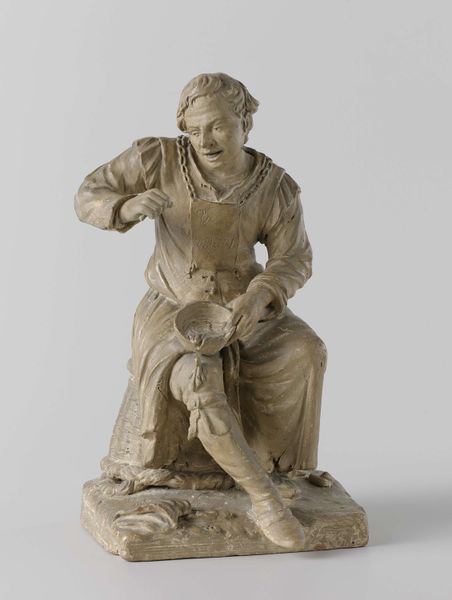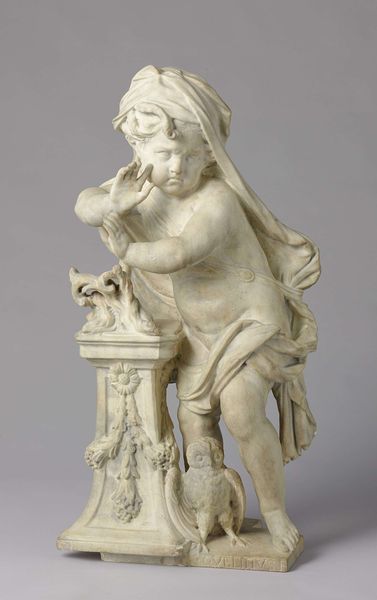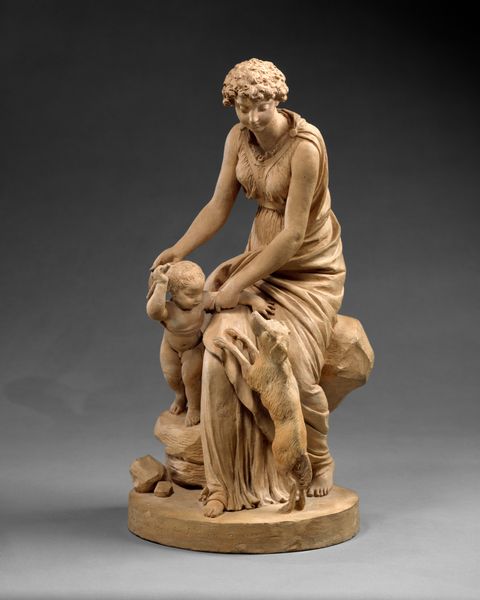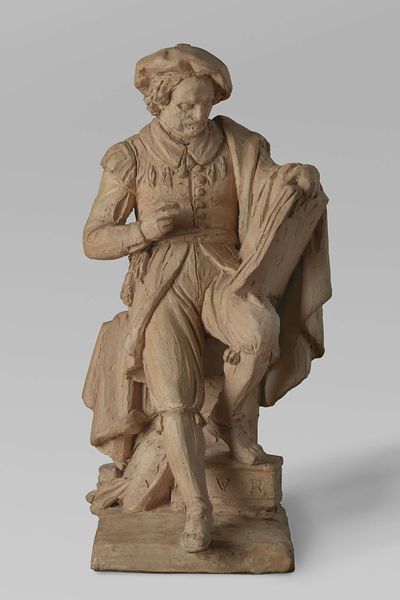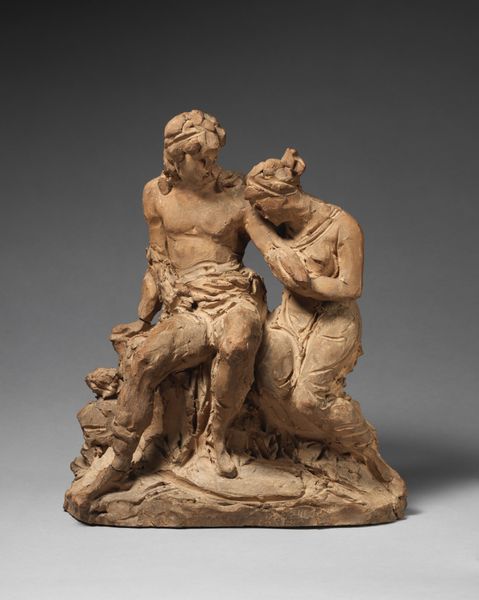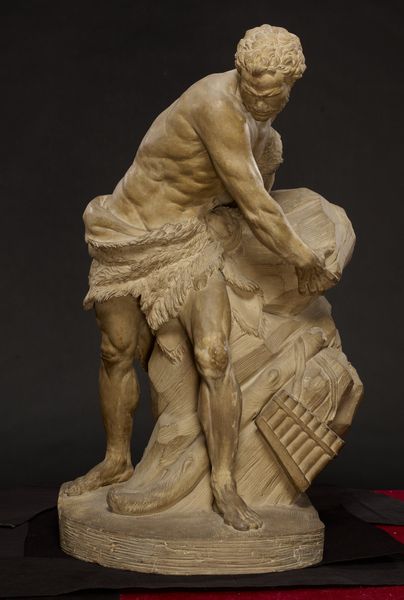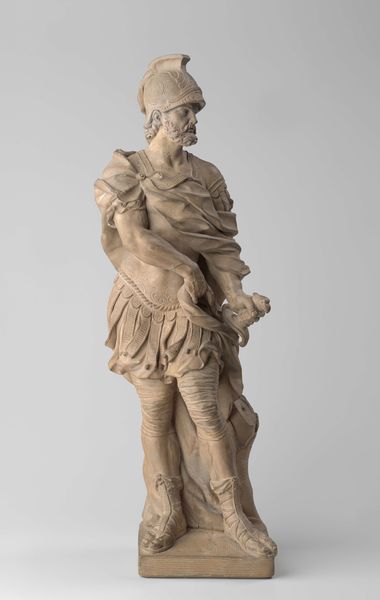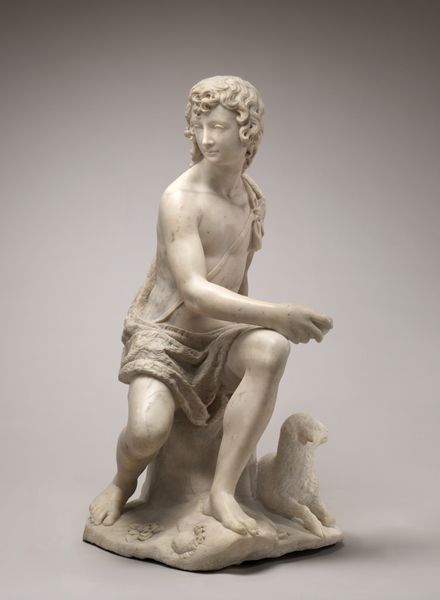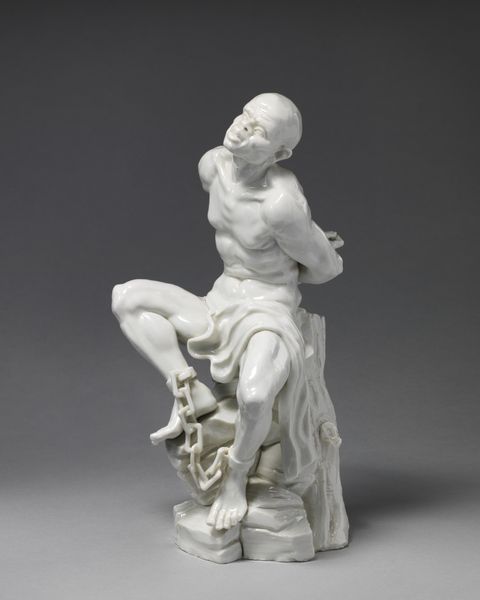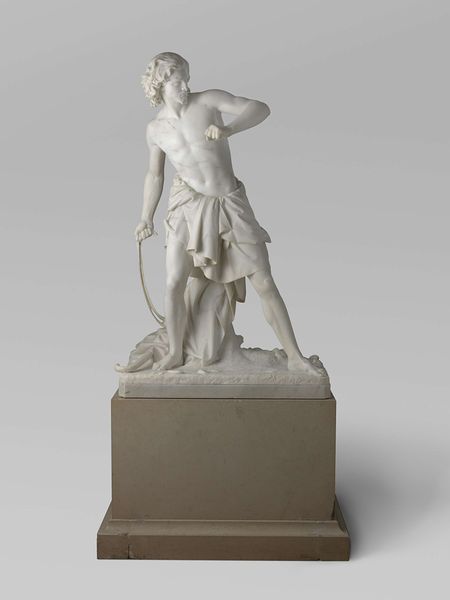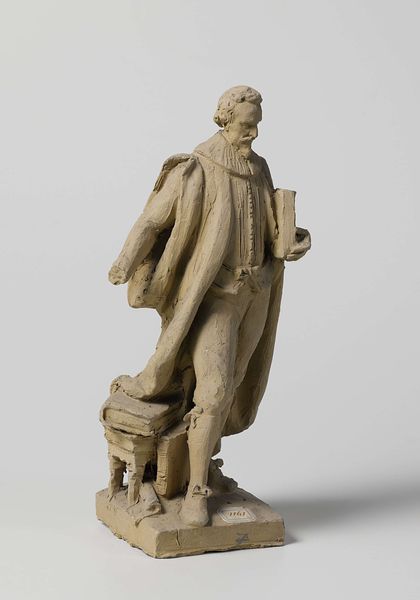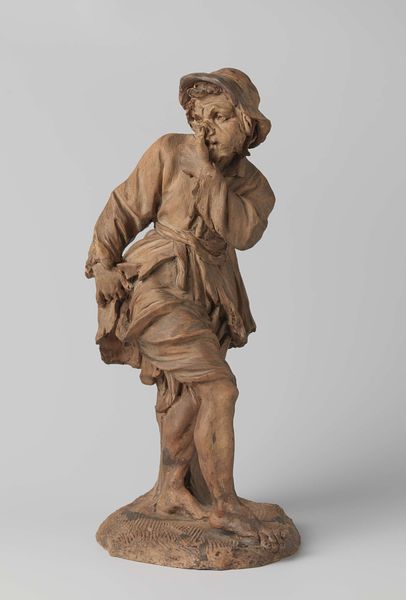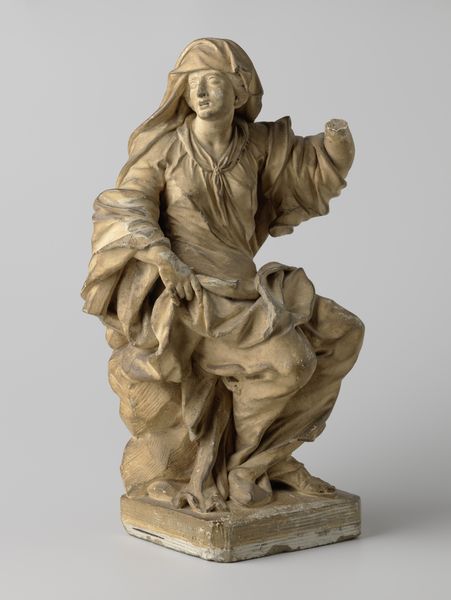
sculpture
#
baroque
#
sculpture
#
figuration
#
sculpture
#
history-painting
Dimensions: height 50 cm, width 34 cm, depth 18 cm
Copyright: Rijks Museum: Open Domain
Curator: Look at the expressive intensity in Pieter Xaveri's sculpture, “Two Madmen,” created in 1673. Editor: Immediately, I'm struck by the dynamic tension and implied movement. The composition guides my eye around the figures. Curator: Xaveri, though obscure today, contributed to the broader tradition of depicting human suffering, echoing prevalent themes in Baroque art. His sculptures gave visual form to societal outcasts. Editor: The textures are remarkable, too. The contrast between the smoothness of the skin and the rough-hewn rock, plus those coarsely rendered chains, amplifies the emotional distress of the scene. It's almost theatrical. Curator: True, and that theatricality links it to broader social performances around madness. Madhouses were emerging as public institutions at this time. Viewing such representations would have held specific cultural meaning. Editor: I am drawn to the torsion in the figures. Look at how the seated madman twists, pulling at his beard. The pose alone conveys a powerful psychological state. What do we know of the sculpture's function? Curator: Little is known specifically about the commission. We do know there was rising social fascination and fear of "unreason" so clearly rendered during the late Baroque, even if now, we feel deeply uncomfortable with those reductive, pejorative representations of mental instability. Editor: A worthwhile discomfort though, as this statue acts as a document of evolving and misguided treatments of mental illness. And looking closer, even out of context, it is a remarkable synthesis of form and affect. Curator: Indeed, considering how such representations influence present-day perceptions adds a powerful, necessary layer. Editor: Thank you; it really puts my understanding of Baroque sculpture into sharper focus.
Comments
rijksmuseum about 2 years ago
⋮
Between 1670 and 1673, the year of his death, the Antwerp sculptor Pieter Xaveri lived in Leiden, where he made small sculptures modelled in terracotta. Many of them are anecdotal. The meaning of this unusual depiction of two fettered men in a frenzy is unknown.
Join the conversation
Join millions of artists and users on Artera today and experience the ultimate creative platform.
